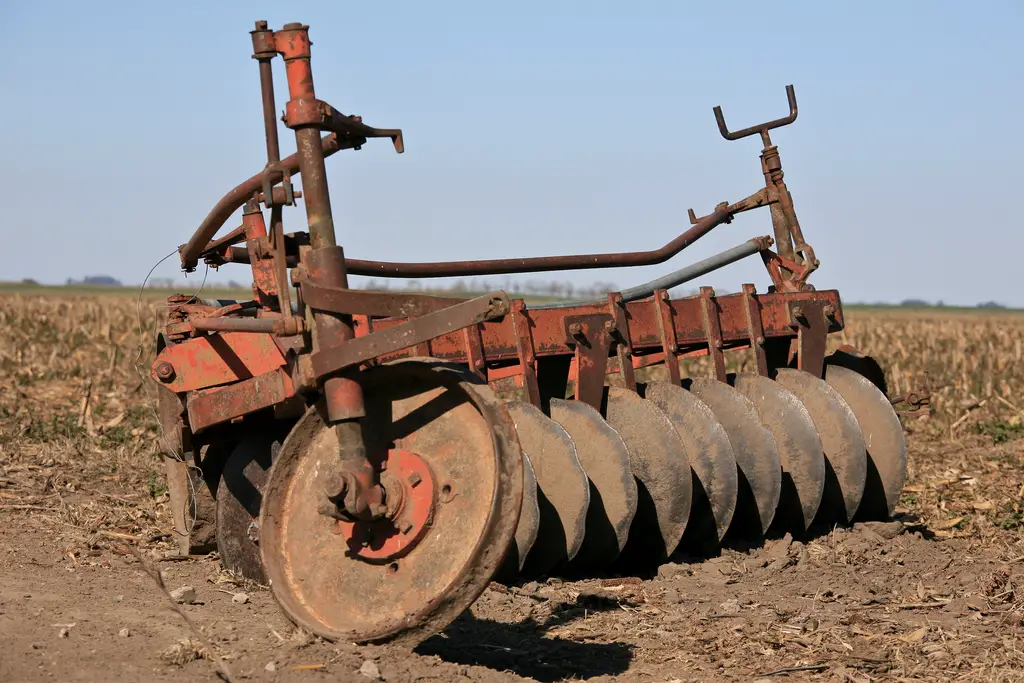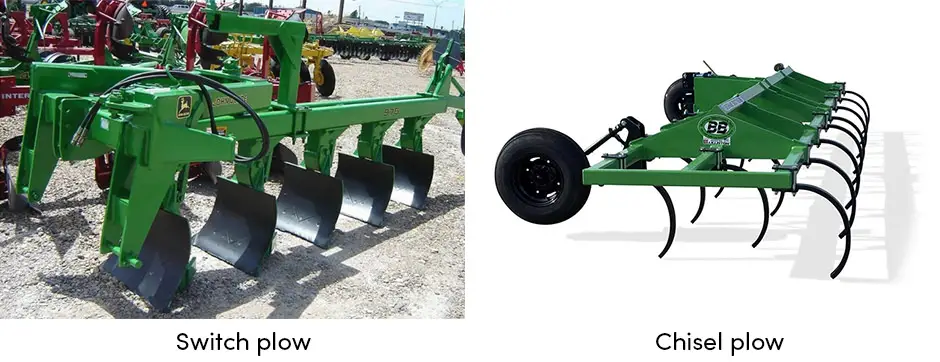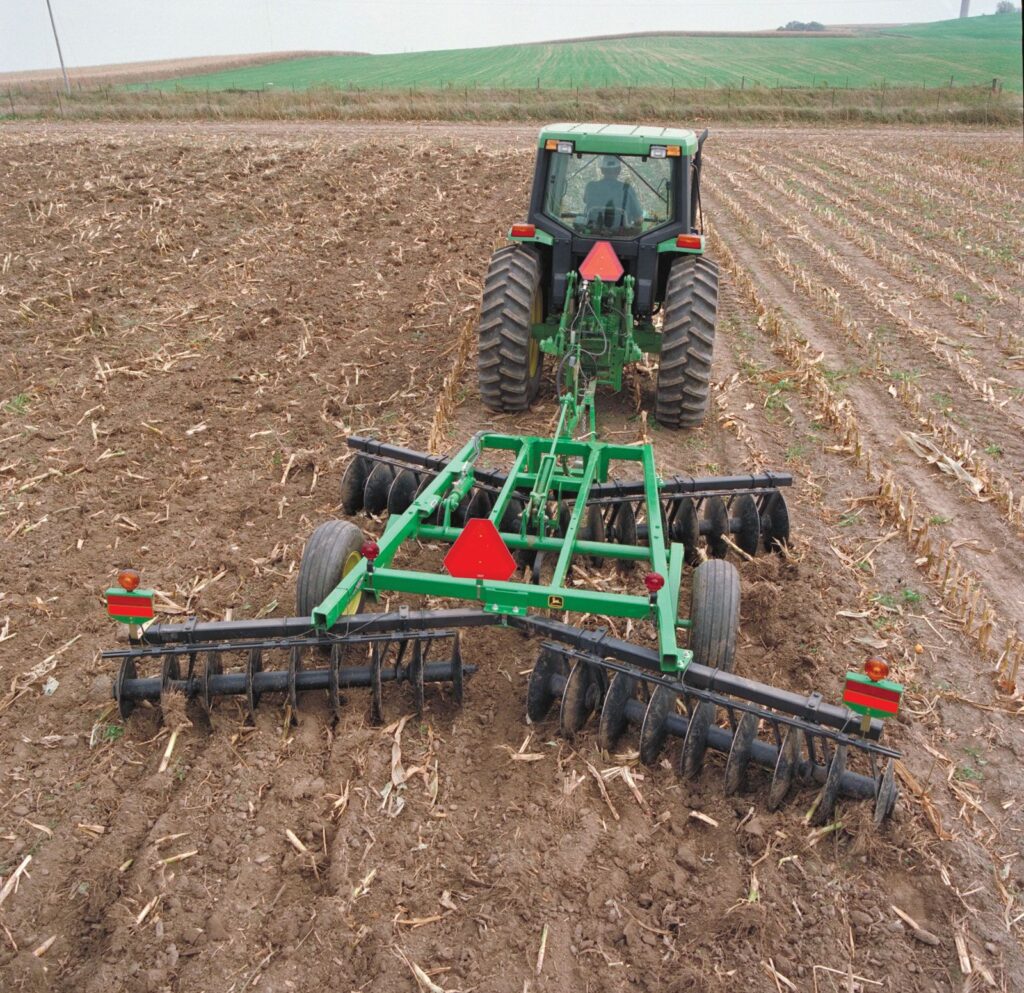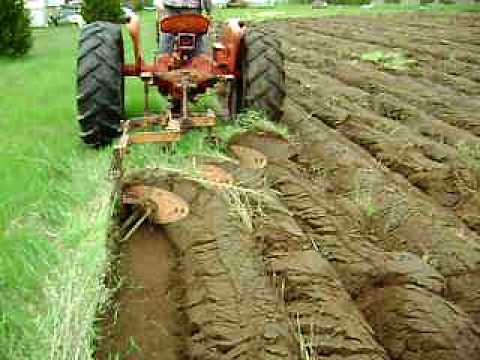This post may contain affiliate links which means I may receive a commission for purchases made through links. Learn more on my Private Policy page.
If you’ve ever wondered about the various types of plows and how they’re used, look no further! This article will walk you through the different types of plows and provide insights into their specific applications. From the traditional moldboard plow to the modern chisel plow, each type serves a unique purpose in the world of agriculture. Whether you’re a seasoned farmer or simply curious about farming practices, this article will shed light on the fascinating world of plows. So, let’s dig in and explore the diverse tools that help cultivate the land!
Types of Plows
Plowing is an essential agricultural practice that helps prepare the soil for planting crops. There are various types of plows available, each designed to serve a specific purpose. In this article, we will explore the different types of plows and discuss their descriptions, functions, usages, advantages, and disadvantages.
Moldboard Plow
Description
The moldboard plow is one of the most common and traditional types of plows. It consists of a single curved metal blade, known as the moldboard, which is attached to a frame. The blade is designed to turn over the soil and bury any vegetation or organic matter beneath the surface.
Function
The main function of the moldboard plow is to invert the soil, bringing the nutrient-rich lower layers to the surface. This helps loosen compacted soil, improves drainage, and enhances soil fertility. Additionally, the moldboard plow helps control weeds by burying them.
Usage
Moldboard plows are typically used in fields with medium to heavy-textured soils and where deep tillage is required. They are commonly employed in the initial stages of land preparation or when preparing the soil for deep-rooted crops such as potatoes and carrots.
Advantages
One of the advantages of using a moldboard plow is its ability to bury plant residue and control weeds effectively. It also helps improve soil structure and drainage, which can be beneficial for crop growth. Additionally, moldboard plows can be adjusted to different depths, allowing farmers to tailor their usage according to specific needs.
Disadvantages
Despite its advantages, the moldboard plow has some drawbacks. The process of inverting the soil can lead to erosion and nutrient loss if not properly managed. Moreover, repeated usage can result in soil compaction, which can adversely affect crop yields. Additionally, moldboard plows require more power to operate compared to other types of plows.

This image is property of farmingequipmentcanada.com.
Chisel Plow
Description
The chisel plow, also known as a subsoiler or subsoil plow, consists of a row of rigid, pointed blades, often referred to as chisels. These blades are attached to a frame and are spaced apart to allow for better soil penetration and minimal soil disturbance.
Function
The primary function of the chisel plow is to break up compacted soils and relieve soil compaction. It helps in deeper tillage, reaching depths beyond the traditional moldboard plow. By loosening the soil, the chisel plow improves air and water circulation, enhances root penetration, and promotes better crop growth.
Usage
Chisel plows are commonly used in fields with compacted soils, especially after harvest, to prepare the soil for the next planting season. They are effective in breaking up hardpan layers and loosening the compacted soil without completely inverting it. Chisel plows are also useful in conservation farming practices to minimize soil erosion.
Advantages
The chisel plow offers several advantages for farmers. Its ability to break up compacted soil enhances water infiltration and reduces surface runoff, contributing to better soil conservation. The minimal soil disturbance achieved by the chisel plow also helps preserve soil structure and organic matter content.
Disadvantages
Despite its benefits, the chisel plow has its disadvantages. It may not be suitable for every type of soil, especially if the soil is light-textured or prone to erosion. Depth control can also be challenging with chisel plows, requiring careful adjustment to avoid excessive soil disturbance.
Disk Plow
Description
The disk plow, as the name suggests, consists of a series of circular blades, known as disks, mounted on a frame. These disks are sharp and angled to cut through the soil and create furrows. They can be adjusted to different angles and depths, depending on the soil and cropping requirements.
Function
The primary function of the disk plow is to cut and mix the soil, incorporating plant residue and organic matter into the upper layers. It also helps in weed control, as the rotating disks can uproot and bury the vegetation.
Usage
Disk plows are versatile and can be used in various soil types, ranging from sandy to heavy clay soils. They are commonly used for primary tillage, and their ability to create a fine seedbed makes them suitable for preparing fields for shallow-rooted crops like corn and soybeans.
Advantages
Disk plows offer several advantages to farmers. The rotation of the disks helps break up clods, improving soil tilth and seedbed preparation. They also provide efficient weed control by burying surface vegetation. Additionally, the disks can be adjusted to different depths, making the disk plow versatile for various soil and crop types.
Disadvantages
Despite its benefits, the disk plow has some disadvantages. The rotating disks can increase the risk of soil erosion, especially on sloping fields. Furthermore, the use of disk plows requires higher horsepower compared to other plow types, which can result in increased fuel consumption and higher operating costs.

This image is property of www.agrivi.com.
Subsoiler
Description
The subsoiler, also known as a mole plow or deep ripper, is a specialized plow designed to break up compacted subsoil layers without fully disturbing the topsoil. It consists of a single, large shank with attached blades that penetrate the soil deeply.
Function
The main function of the subsoiler is to alleviate soil compaction in deeper layers, below the reach of traditional plows. By breaking up compacted soil, it improves root penetration, enhances water drainage, and promotes aeration. The subsoiler also assists in the incorporation of organic matter into the subsoil.
Usage
Subsoilers are typically used in fields with a history of soil compaction or those with heavy clay soils. They are often utilized in conjunction with other plows or tillage equipment to prepare the soil adequately. Subsoiling is commonly performed during fall or spring, outside the growing season, to minimize crop disturbance.
Advantages
The subsoiler offers several advantages for farmers. It helps mitigate soil compaction and improves soil structure and water infiltration, leading to enhanced root development and crop yields. The minimal surface disturbance also aids in reducing erosion and nutrient loss, making it an ideal option for conservation-focused farming practices.
Disadvantages
While subsoiling has numerous benefits, it also has some disadvantages. The upfront cost of subsoiler equipment can be high, making it a significant investment for farmers. Additionally, subsoiling requires skilled operators to ensure proper depth control and prevent unintended damage to the soil structure.
Rotary Plow
Description
The rotary plow, also known as a rotary tiller or rototiller, is a powered implement that uses rotating blades or tines to till the soil. It is typically attached to a tractor and is driven by a power take-off (PTO) system.
Function
The main function of the rotary plow is to break up and mix the soil, creating a fine seedbed for planting. The rotating blades or tines cut through the soil, pulverizing it and incorporating organic matter and plant residue.
Usage
Rotary plows are commonly used in gardens, small-scale farming, and for landscaping purposes. They are ideal for preparing soil in smaller areas, where larger plows may be impractical. Rotary plows are efficient in removing weeds, improving soil texture, and creating a suitable planting surface.
Advantages
The rotary plow offers several advantages for smaller-scale farmers and gardeners. It is relatively easy to operate and maneuver, making it suitable for tight spaces. The rotating blades or tines provide effective weed control by uprooting and burying unwanted vegetation. Additionally, the fine soil texture created by the rotary plow promotes better seed germination and root growth.
Disadvantages
Despite its benefits, the rotary plow has some limitations. It may not be as suitable for large-scale farming due to its size and limited working widths. Additionally, the rotary plow can be less effective in breaking up compacted soils compared to other plow types. Care must be taken when using a rotary plow to avoid over-tilling, which can lead to soil erosion.

This image is property of cdn.britannica.com.
Furrow Plow
Description
The furrow plow, also known as a ridging plow or hillside plow, is specifically designed to create furrows or ridges in the soil. It consists of a curved metal blade that cuts through the soil horizontally, forming a trench.
Function
The primary function of the furrow plow is to create furrows or ridges in the soil for planting crops. These furrows help with water management, especially in areas prone to waterlogging, by providing drainage channels. Furrow plowing also aids in weed control by burying surface vegetation.
Usage
Furrow plows are commonly used in areas with heavy rainfall or in fields where excess water needs to be drained efficiently. They are especially useful for crops that require well-drained soil, such as sweet potatoes or certain root vegetables. Furrow plows are also employed in terrace farming to control erosion on slopes.
Advantages
The furrow plow offers several advantages for farmers working in areas with drainage challenges. It helps create well-defined furrows, allowing excess water to drain away from the crop roots. Furrow plowing also aids in weed suppression by burying the weeds, reducing competition for nutrients and water.
Disadvantages
While furrow plowing has its benefits, it also has certain limitations. The process of creating furrows can be time-consuming and labor-intensive, especially in larger fields. Moreover, furrow plows may not be suitable for areas with shallow groundwater tables, as they can exacerbate waterlogging issues.
One-Way Plow
Description
The one-way plow, also known as a “turning plow” or “rollover plow,” is a specialized plow designed to turn the soil in one direction only. It consists of a single, large blade attached to a frame, allowing the soil to be turned over and moved to the side.
Function
The main function of the one-way plow is to invert the soil and bring the nutrient-rich topsoil to the surface. By burying the lower layers, the one-way plow helps control weeds and improves soil fertility. It also aids in incorporating organic matter and residue into the soil.
Usage
One-way plows are typically used for primary tillage or initial soil preparation. They are commonly employed when breaking new ground, preparing fields for planting, or incorporating organic matter into the soil. One-way plows are often utilized in large-scale agricultural operations.
Advantages
The one-way plow offers several advantages for farmers. Its ability to effectively bury crop residue and weeds helps control pests and diseases while improving soil fertility. The process of inverting the soil also improves soil structure and increases the availability of essential nutrients for plant uptake.
Disadvantages
Despite its benefits, the one-way plow has some drawbacks. It can be prone to causing soil erosion, especially if used on sloping fields. Additionally, the one-way plow requires proper adjustment and skilled operators to achieve the desired depth and minimize unintentional damage to the soil structure.

This image is property of i.ytimg.com.
Offset Plow
Description
The offset plow, also known as a “disc plow,” is a specialized plow designed to break up and turn the soil effectively. It consists of multiple individual disc blades mounted on a frame, arranged in an offset pattern to reduce soil disturbance and minimize compaction.
Function
The primary function of the offset plow is to cut and mix the soil while minimizing soil disruption. By offsetting the individual disc blades, the plow reduces the chance of creating a compacted layer and helps preserve soil structure. The offset plow is effective in breaking up clods and creating a suitable seedbed.
Usage
Offset plows are commonly used for primary tillage and field preparation. They are suitable for various soil types and are often utilized in areas with heavy clays or high organic matter content. Offset plows are effective in churning the soil and creating a uniform seedbed for various crops.
Advantages
The offset plow offers several advantages for farmers. Its unique design reduces soil disruption and minimizes compaction, preserving the natural soil structure. The individual disc blades effectively break up clumps and create a fine seedbed, ensuring optimal crop growth. The offset plow also provides efficient weed control by burying surface vegetation.
Disadvantages
Despite its benefits, the offset plow has its limitations. The rotating individual disc blades can be prone to wear and tear, requiring regular maintenance and replacement. Additionally, the offset plow may not be as effective in turning over large amounts of soil compared to other plow types, especially in fields with significant vegetation or residue.
Plow Attachments
Description
Plow attachments refer to additional accessories or modifications that can be added to plows to enhance their functionality and versatility. These attachments can range from furrow openers to depth control wheels, depending on the specific needs of the farmer.
Function
The main function of plow attachments is to provide additional features and capabilities to the primary plow. Furrow openers, for example, create furrows ahead of the plow, facilitating planting or irrigation. Depth control wheels help maintain consistent plowing depth, ensuring uniform soil turnover.
Usage
Plow attachments are used in conjunction with primary plows to tailor their performance to specific soil and crop requirements. Different attachments are chosen based on the desired outcome, such as furrow creation, seed placement, or improved depth control. The usage of plow attachments varies depending on the individual farmer’s needs and preferences.
Advantages
Plow attachments offer several advantages for farmers seeking improved efficiency and productivity. They allow for customization and optimization of plow performance, ensuring precise placement of seeds, consistent depth control, and enhanced field operations. Plow attachments also reduce the need for additional implements, saving time, and reducing equipment costs.
Disadvantages
While plow attachments offer significant advantages, they also have some disadvantages. They can add complexity to the plow setup, requiring additional adjustments and maintenance. Moreover, some attachments may increase operating costs, as they may require separate power sources or additional equipment.
In conclusion, plows play a vital role in modern agriculture, facilitating soil preparation, weed control, and organic matter incorporation. Understanding the different types of plows and their specific characteristics is crucial for farmers to make informed decisions related to their land preparation needs. Whether it’s the traditional moldboard plow or the versatile disk plow, each type offers its unique advantages and disadvantages. By selecting the appropriate plow based on soil type, cropping requirements, and conservation goals, farmers can optimize their plowing practices and achieve optimal crop productivity.

This image is property of www.agrivi.com.
This post may contain affiliate links which means I may receive a commission for purchases made through links. Learn more on my Private Policy page.

